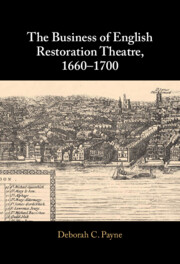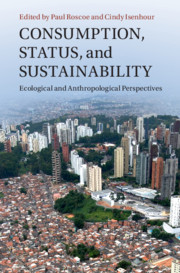Refine search
Actions for selected content:
35 results
7 - Language Ideologies of Prestige
- from Part II - Constructing Languages through Discourses on Belonging, Prestige, and Materiality
-
- Book:
- Liquid Languages
- Published online:
- 28 July 2025
- Print publication:
- 14 August 2025, pp 126-159
-
- Chapter
- Export citation
World heritage and inter/national cultural prestige
-
- Journal:
- Review of International Studies , First View
- Published online by Cambridge University Press:
- 07 July 2025, pp. 1-19
-
- Article
-
- You have access
- Open access
- HTML
- Export citation
4 - Causes of Nuclear Latency: Why Technology Spreads
-
- Book:
- Influence without Arms
- Published online:
- 31 October 2024
- Print publication:
- 14 November 2024, pp 114-141
-
- Chapter
- Export citation

The Business of English Restoration Theatre, 1660–1700
-
- Published online:
- 18 October 2024
- Print publication:
- 13 June 2024
-
- Book
-
- You have access
- Open access
- Export citation
Chapter 2 - The Economics of Scarcity and Prestige
-
- Book:
- The Business of English Restoration Theatre, 1660–1700
- Published online:
- 18 October 2024
- Print publication:
- 13 June 2024, pp 67-94
-
- Chapter
-
- You have access
- Open access
- HTML
- Export citation
Formalising prestige bias: Differences between models with first-order and second-order cues
-
- Journal:
- Evolutionary Human Sciences / Volume 6 / 2024
- Published online by Cambridge University Press:
- 20 March 2024, e21
-
- Article
-
- You have access
- Open access
- HTML
- Export citation
7 - Status
-
-
- Book:
- Human Behavioral Ecology
- Published online:
- 07 March 2024
- Print publication:
- 14 March 2024, pp 153-179
-
- Chapter
- Export citation
Why do we say them when we know it should be they? Twitter as a resource for investigating nonstandard syntactic variation in The Netherlands
-
- Journal:
- Language Variation and Change / Volume 35 / Issue 2 / July 2023
- Published online by Cambridge University Press:
- 07 August 2023, pp. 223-245
-
- Article
-
- You have access
- Open access
- HTML
- Export citation
Chapter 4 - The Best of the Best
- from Part I - Contexts
-
-
- Book:
- The Cambridge Companion to the American Short Story
- Published online:
- 11 May 2023
- Print publication:
- 25 May 2023, pp 62-79
-
- Chapter
- Export citation
Chapter 3 - The Allure of Prizes
- from Section 1 - Incentives, Context, and Capital
-
- Book:
- The Trajectory of Discovery
- Published online:
- 06 April 2023
- Print publication:
- 13 April 2023, pp 19-22
-
- Chapter
- Export citation
2 - Evaluation of Pragmatic Markers
- from Part I - Innovations in Theory and Method
-
-
- Book:
- Discourse-Pragmatic Variation and Change
- Published online:
- 14 July 2022
- Print publication:
- 28 July 2022, pp 40-60
-
- Chapter
- Export citation
3 - Gender
-
- Book:
- Arabic Sociolinguistics
- Published online:
- 01 July 2022
- Print publication:
- 07 July 2022, pp 48-76
-
- Chapter
- Export citation
4 - On the Inevitability of Social Meaning and Ideology in Accounts of Syntactic Change: Evidence from Pronoun Competition in Netherlandic Dutch
-
-
- Book:
- Explanations in Sociosyntactic Variation
- Published online:
- 06 January 2022
- Print publication:
- 20 January 2022, pp 120-143
-
- Chapter
- Export citation
3 - Heritage Languages in Southeastern Europe
- from Part I - Heritage Languages around the World
-
-
- Book:
- The Cambridge Handbook of Heritage Languages and Linguistics
- Published online:
- 04 November 2021
- Print publication:
- 25 November 2021, pp 69-90
-
- Chapter
- Export citation
12 - Communication
-
- Book:
- European Language Matters
- Published online:
- 29 October 2021
- Print publication:
- 11 November 2021, pp 214-228
-
- Chapter
- Export citation
Prestige or Perish: Publishing Decisions in Academic Archaeology
-
- Journal:
- American Antiquity / Volume 86 / Issue 4 / October 2021
- Published online by Cambridge University Press:
- 03 November 2021, pp. 669-695
- Print publication:
- October 2021
-
- Article
-
- You have access
- Open access
- HTML
- Export citation
4 - Serbian Campaigns 1914
-
- Book:
- The Austro-Hungarian Army and the First World War
- Published online:
- 10 November 2021
- Print publication:
- 30 September 2021, pp 119-150
-
- Chapter
- Export citation
12 - English and Spanish in Contact in North America
-
-
- Book:
- English and Spanish
- Published online:
- 17 September 2021
- Print publication:
- 30 September 2021, pp 233-257
-
- Chapter
- Export citation
4 - Graphic Fiction
- from Part I - Forms
-
-
- Book:
- The Cambridge Companion to Twenty-First Century American Fiction
- Published online:
- 02 September 2021
- Print publication:
- 23 September 2021, pp 79-99
-
- Chapter
- Export citation

Consumption, Status, and Sustainability
- Ecological and Anthropological Perspectives
-
- Published online:
- 30 July 2021
- Print publication:
- 12 August 2021
